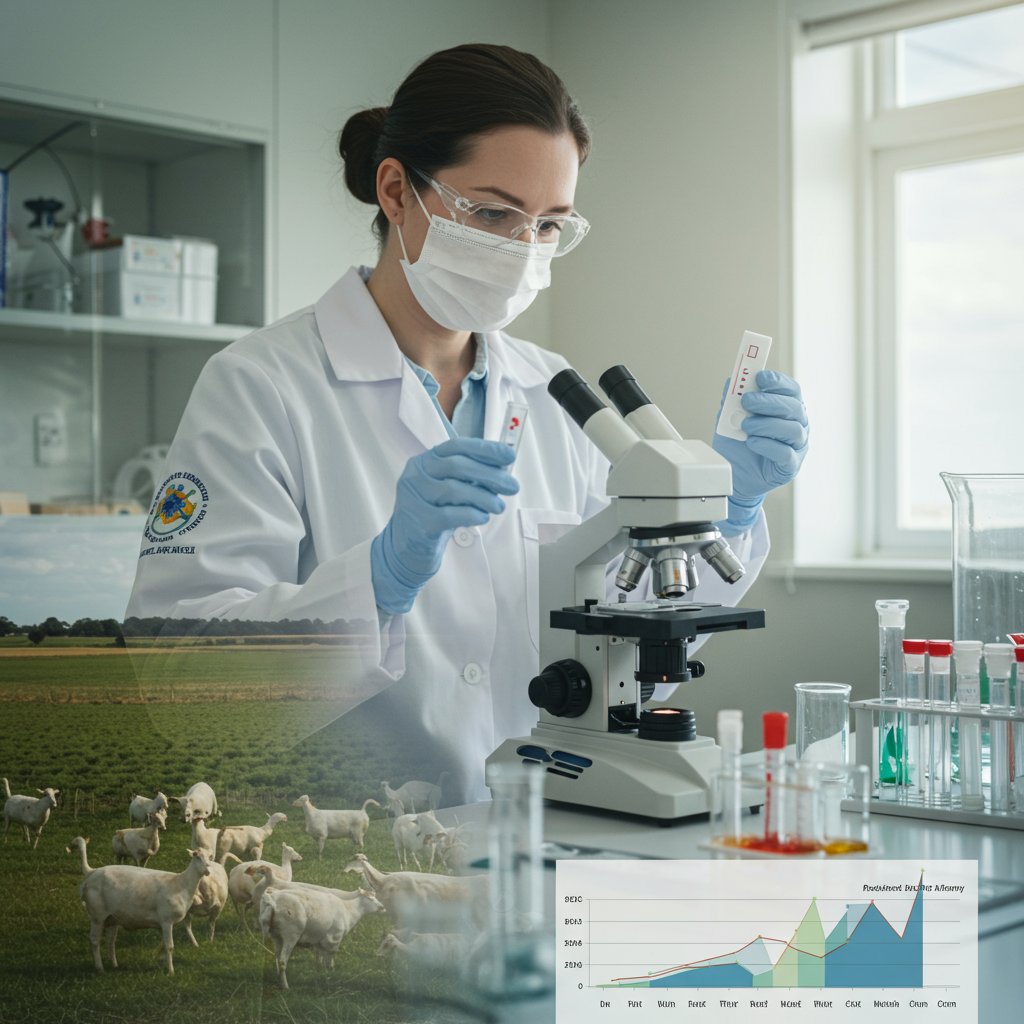The Centers for Disease Control and Prevention (CDC) has officially ended its emergency response dedicated to the H5N1 bird flu outbreak. This transition, effective July 2, 2025, signals a shift in how the agency manages the virus. Instead of a dedicated emergency framework, future updates and surveillance will integrate into the CDC’s routine reports on seasonal influenza and standard infectious disease programs.
This move doesn’t mean the virus is gone. A spokesperson for the Department of Health and human Services explained the emergency response was “deactivated to transition back to regular program activity.” This decision came after observing a decline in H5N1 infections among animals and noting no new human cases reported in the United States since February 2025.
Why the Emergency Response Ended
The H5N1 Bird Flu Response had been active since April 4, 2024. Its purpose was to provide enhanced support, including additional staffing, for the public health effort against the virus. Dr. Nirav Shah, a former principal deputy director at the CDC, supported the decision, noting it was driven by career scientists based on the current epidemiological data.
He emphasized that the lack of recent human cases diminished the need for the intense, “sprint all-out” level of an emergency response. Importantly, health officials retain the capability to quickly reinstate the emergency response level if circumstances change or new human cases emerge. Surveillance and readiness efforts for influenza, including H5N1, will continue as part of regular operations.
Understanding the H5N1 Threat
Avian influenza A(H5N1) virus, commonly known as bird flu, has been a global concern since it was first identified in the late 1990s. The current wave, which began gaining significant traction in 2022, has severely impacted wild bird populations and commercial poultry flocks worldwide, including in the US. Nearly 175 million birds in the United States across various settings have been affected.
What made this recent wave particularly concerning was the virus’s ability to jump species more frequently. H5N1 has spread to dozens of mammal species across over 100 countries. A significant development occurred in early 2024 when the virus began infecting dairy cattle in the United States, posing a new threat to the agricultural industry. Over 1,000 dairy herds in 17 states have tested positive for the virus in the 14 months leading up to the CDC’s decision.
Human Cases: A Closer Look
Historically, the US has reported 70 human cases of bird flu, with one fatality occurring earlier this year in Louisiana. Since April 2024, CDC data indicates at least 61-68 individuals have tested positive for H5N1. The vast majority of these recent infections were linked to close contact with infected animals, primarily dairy cattle or poultry.
These cow-linked cases were predominantly mild, often presenting only as eye redness and irritation. Antiviral medication helped recovery for most. However, the outbreak also saw more severe outcomes. The one US death linked to H5N1 bird flu occurred in Louisiana following exposure to sick backyard birds. This case was caused by a different genetic lineage (D1.1) than the strain predominantly circulating in cattle (B3.13).
Furthermore, the US saw its first severe, hospitalized case in Louisiana, also linked to backyard birds and the D1.1 strain. This individual was hospitalized with a critical respiratory illness. A severe, months-long illness in a Canadian teen linked to poultry also involved the D1.1 strain. This highlights that while cattle-linked cases have often been mild, exposure to other animal sources or different viral strains can result in more serious illness.
Two Strains Circulating
Recent surveillance has identified at least two distinct H5N1 strains circulating among animals and occasionally infecting humans in the US.
B3.13: This strain was confirmed in US cattle in March 2023 and is responsible for most dairy herd outbreaks and the majority of mild human cases linked to cattle exposure (over 60 cases).
D1.1: This strain circulates in wild birds and poultry. It was detected in Nevada cattle in January 2025 and has been linked to approximately 15 human cases in five states (IA, LA, OR, WA, WI) primarily from poultry exposure. Notably, the D1.1 strain was responsible for the US fatality and the severe US hospitalization.
The detection of distinct strains moving from wild birds into cattle populations at least twice underscores the challenges of controlling the virus’s spread among animals and those working with them.
Ongoing Concerns and Surveillance
Despite the end of the federal emergency, concerns remain. The significant spread of H5N1 within dairy cattle populations raises worries about the potential for the virus to mutate, potentially becoming more easily transmissible between humans or causing more severe disease. While there is no evidence of human-to-human transmission currently, uncontrolled animal spread increases this theoretical risk.
For example, California’s governor declared a state of emergency due to the rapid spread of H5N1 in dairy herds within the state, highlighting that state-level concerns persist even as the federal emergency response steps down. California accounts for roughly half of the known human infections in the US reported since April 2024, though the vast majority were mild.
Federal health agencies will continue monitoring the situation closely. Surveillance of both animal and human populations for H5N1 activity will proceed under regular programs. This includes monitoring wild birds, poultry, and livestock, as well as tracking human illnesses through existing influenza surveillance systems. The CDC has noted that while milder human cases linked to animal exposure could potentially go undetected, it is unlikely that severe cases are being missed.
Risk Remains Low for the General Public
The official stance from public health authorities is that the current public health risk from H5N1 bird flu remains low for the general public. The primary route of human infection identified so far is through close, prolonged, or unprotected contact with infected animals or environments contaminated with their bodily fluids or feces.
However, individuals with direct exposure to sick animals, particularly dairy cattle, poultry, or wild birds, face a higher risk. This includes farm workers, veterinarians, and those involved in animal culling or handling.
Precautions for Higher-Risk Individuals
Those who might encounter potentially infected animals should take precautions:
Avoid unprotected contact with sick or dead wild birds and poultry.
Avoid unprotected contact with sick livestock, especially dairy cattle showing signs of illness.
Use appropriate personal protective equipment (PPE), such as gloves, masks, and eye protection, if contact is unavoidable.
Avoid consuming raw milk, raw milk products, and raw eggs from animals with confirmed or suspected bird flu. Pasteurization effectively kills the virus. There is no evidence of infection from properly cooked poultry or eggs.
If you develop flu-like symptoms after exposure to potentially infected animals, contact your local health department or healthcare provider immediately.
Symptoms of H5N1 Bird Flu in Humans
Symptoms of human bird flu infection can vary. They might range from very mild (or even asymptomatic) to severe respiratory illness. Common symptoms include:
Eye redness or conjunctivitis
Fever or feeling feverish
Cough
Sore throat
Runny or stuffy nose
Muscle or body aches
Headaches
Fatigue
Shortness of breath or difficulty breathing
Less common symptoms can include nausea, vomiting, diarrhea, and seizures. The severity can range from mild flu-like illness to severe pneumonia requiring hospitalization.
Vaccine and Treatment
Currently, there is no authorized vaccine for humans specifically against H5N1 bird flu that is publicly available. Seasonal influenza vaccines do not protect against bird flu. However, work is ongoing to develop a human vaccine, with the US government providing funding to manufacturers. Antiviral medications used for seasonal flu can be effective in treating bird flu infections, particularly if started early. Vaccines for birds and poultry are available and used in animal populations to help control outbreaks.
The end of the federal emergency response marks a procedural shift, reflecting the current data on human infections. However, surveillance continues, and authorities remain prepared to increase activity if needed, underscoring the importance of ongoing vigilance regarding this evolving virus.
Frequently Asked Questions
What does the CDC ending the bird flu emergency response mean for the public?
The CDC ending its H5N1 bird flu emergency response on July 2, 2025, means the agency is transitioning from a dedicated, high-intensity framework back to routine surveillance and management. Updates and monitoring for H5N1 will now be handled through standard influenza and infectious disease programs. Public health authorities state the risk remains low for the general public, but ongoing monitoring continues, and the CDC can quickly reinstate the emergency response if needed.
Have there been any severe human cases of H5N1 bird flu in the U.S. recently?
Yes, despite most recent US human cases linked to dairy cattle being mild, there have been severe outcomes. The United States recorded its first H5N1-related death earlier this year in Louisiana, and the first severe, hospitalized case also occurred in Louisiana. Both severe cases were linked to exposure to backyard birds and involved the D1.1 strain, which is distinct from the B3.13 strain most commonly found in cattle.
How does the H5N1 virus spread, and what precautions should people take?
H5N1 bird flu primarily spreads to humans through close or prolonged contact with infected animals, including sick or dead wild birds, poultry, or livestock like dairy cattle. The virus is shed in animal saliva, mucous, feces, and bodily fluids (like raw milk from infected cows). The risk to the general public is low, but those working with animals are at higher risk. Precautions include avoiding contact with potentially infected animals, using protective equipment if contact is necessary, and avoiding consumption of raw milk and raw milk products.




